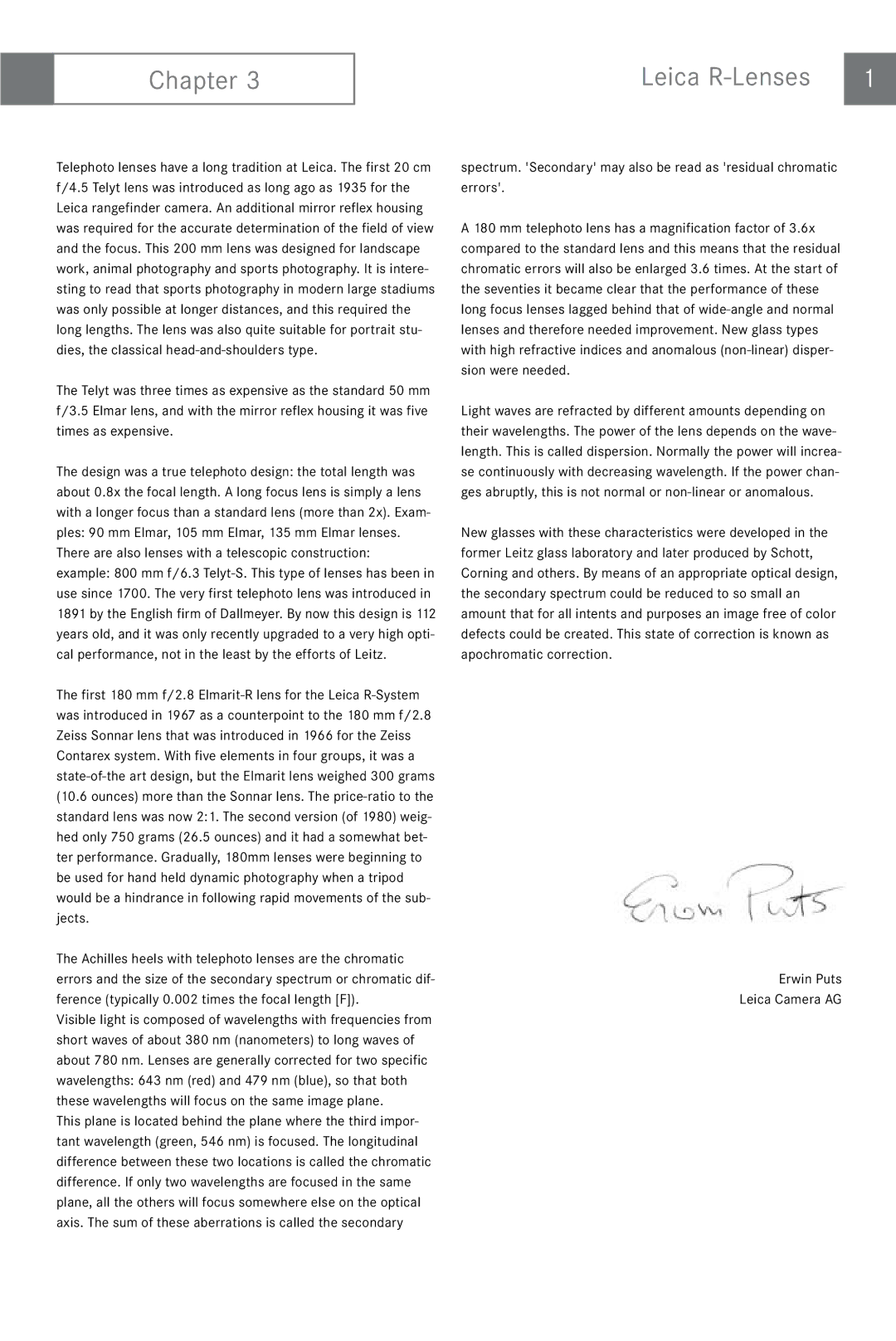
Chapter 3
Leica | 1 |
|
|
Telephoto lenses have a long tradition at Leica. The first 20 cm f/4.5 Telyt lens was introduced as long ago as 1935 for the Leica rangefinder camera. An additional mirror reflex housing was required for the accurate determination of the field of view and the focus. This 200 mm lens was designed for landscape work, animal photography and sports photography. It is intere- sting to read that sports photography in modern large stadiums was only possible at longer distances, and this required the long lengths. The lens was also quite suitable for portrait stu- dies, the classical
The Telyt was three times as expensive as the standard 50 mm f/3.5 Elmar lens, and with the mirror reflex housing it was five times as expensive.
The design was a true telephoto design: the total length was about 0.8x the focal length. A long focus lens is simply a lens with a longer focus than a standard lens (more than 2x). Exam- ples: 90 mm Elmar, 105 mm Elmar, 135 mm Elmar lenses. There are also lenses with a telescopic construction: example: 800 mm f/6.3
The first 180 mm f/2.8
spectrum. 'Secondary' may also be read as 'residual chromatic errors'.
A 180 mm telephoto lens has a magnification factor of 3.6x compared to the standard lens and this means that the residual chromatic errors will also be enlarged 3.6 times. At the start of the seventies it became clear that the performance of these long focus lenses lagged behind that of
Light waves are refracted by different amounts depending on their wavelengths. The power of the lens depends on the wave- length. This is called dispersion. Normally the power will increa- se continuously with decreasing wavelength. If the power chan- ges abruptly, this is not normal or
New glasses with these characteristics were developed in the former Leitz glass laboratory and later produced by Schott, Corning and others. By means of an appropriate optical design, the secondary spectrum could be reduced to so small an amount that for all intents and purposes an image free of color defects could be created. This state of correction is known as apochromatic correction.
The Achilles heels with telephoto lenses are the chromatic |
|
errors and the size of the secondary spectrum or chromatic dif- | Erwin Puts |
ference (typically 0.002 times the focal length [F]). | Leica Camera AG |
Visible light is composed of wavelengths with frequencies from |
|
short waves of about 380 nm (nanometers) to long waves of |
|
about 780 nm. Lenses are generally corrected for two specific |
|
wavelengths: 643 nm (red) and 479 nm (blue), so that both |
|
these wavelengths will focus on the same image plane. |
|
This plane is located behind the plane where the third impor- |
|
tant wavelength (green, 546 nm) is focused. The longitudinal |
|
difference between these two locations is called the chromatic |
|
difference. If only two wavelengths are focused in the same |
|
plane, all the others will focus somewhere else on the optical |
|
axis. The sum of these aberrations is called the secondary |
|
